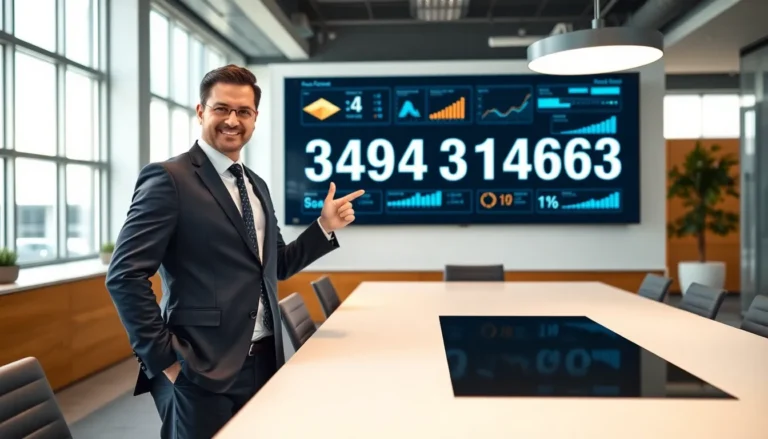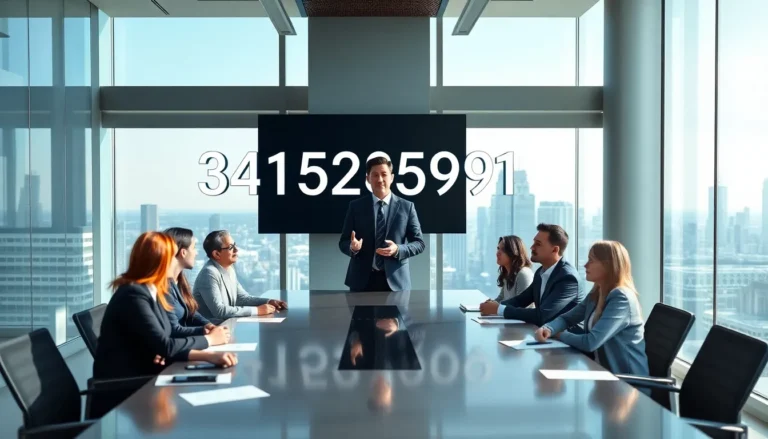Gamers know the struggle of watching their beloved titles gather dust while they dive into the latest releases. Enter PlayStation backwards compatibility, the magical bridge connecting nostalgia with modern gaming. Imagine reliving epic quests and unforgettable adventures without firing up an old console or dusting off those ancient cartridges.
With backwards compatibility, players can seamlessly transition between generations, proving that age is just a number—even in gaming. Whether it’s slaying dragons in “Skyrim” or racing through “Gran Turismo,” the ability to access classic games on newer consoles is like finding a forgotten slice of pizza in the fridge—pure joy. So, let’s explore how this feature can transform your gaming experience and why it’s a must-have for every PlayStation enthusiast.
Table of Contents
ToggleOverview of PlayStation Backwards Compatibility
PlayStation backwards compatibility enables players to enjoy games from previous console generations on newer systems. This capability caters to gamers seeking access to beloved titles without needing additional hardware. Notably, it allows them to revisit classics like “Skyrim” or “Gran Turismo,” enhancing their gaming experiences.
Several PlayStation consoles offer varying levels of backwards compatibility. The PlayStation 2 supports many original PlayStation titles, while the PlayStation 3 can play select PS2 and PS1 games depending on the model. More recently, the PlayStation 5 boasts compatibility with a vast majority of PlayStation 4 titles, creating a seamless transition for players upgrading their systems.
Understanding the technical aspects illuminates why backwards compatibility matters. The implementation involves software emulation and hardware architecture that enables older games to run on new systems. This feature makes popular franchises accessible, encouraging a richer library of games for players.
Backwards compatibility proves crucial for retaining player interest across console generations. Gamers express increased satisfaction knowing they can carry their digital libraries into future releases. Enhanced features such as improved graphics or faster load times often accompany these classic titles when played on newer systems.
The impact of backwards compatibility extends beyond convenience. It fosters a sense of nostalgia for many players, enabling them to rekindle their fond memories of gaming. Accessibility also stimulates the gaming market by encouraging developers to re-release classic games for modern audiences, thus revitalizing interest in older franchises.
History of Backwards Compatibility in PlayStation
Backwards compatibility in PlayStation has evolved significantly since its inception. The journey through gaming generations showcases the changes and challenges faced by Sony.
Early Consoles and Compatibility Challenges
Original PlayStation introduced several hurdles for backwards compatibility. Many early titles required specific hardware features that were not present in later models. Developers struggled to ensure that games from prior generations played smoothly on newer consoles. Limited resources impeded progress in creating effective emulation techniques. Initial attempts often resulted in missed opportunities to maintain a library of classic titles. Despite these obstacles, the desire for continuity in gaming experiences drove efforts to improve compatibility over time.
Evolution with PlayStation 2 and 3
PlayStation 2 revolutionized backwards compatibility by supporting a vast library of original PlayStation games. It achieved this with internal hardware that directly mirrored the older system’s architecture. Gamers enjoyed a seamless transition, allowing access to cherished titles without hassle. PlayStation 3 further expanded compatibility, albeit for a select number of PS2 and PS1 games in varying models. This strategic choice aimed at balancing innovation with the demand for nostalgic gaming experiences. Enhanced graphics and performance improvements marked this evolution, enriching gameplay for long-time fans.
Current Status of Backwards Compatibility
Backwards compatibility remains a vital aspect of PlayStation consoles, enabling gamers to access their favorite titles across generations. The following sections detail the current state of this feature for the PlayStation 4 and the PlayStation 5.
PlayStation 4 Compatibility Features
PlayStation 4 supports a limited selection of PlayStation 2 and PlayStation 3 titles. Several classic games are available for purchase and play via the PlayStation Store, but not all past titles are accessible. Players gain improved graphics and performance enhancements for supported games, resulting in a better overall experience. Users can also enjoy select games through PlayStation Now, a subscription service that allows streaming and downloading of previous generation titles. Overall, the PS4’s compatibility features focus on providing nostalgic experiences while showcasing a curated library of beloved classics.
PlayStation 5 Compatibility Enhancements
PlayStation 5 enhances backwards compatibility significantly, allowing access to over 4,000 PlayStation 4 titles. Most PS4 games play seamlessly on the PS5, benefiting from faster load times and improved frame rates. Additionally, titles may receive graphical upgrades, enhancing visuals and overall immersion. Players can transfer their saved data from the PS4 to the PS5, ensuring a smooth continuation of their gaming journey. With backward compatibility supporting a vast library, the PS5 offers fans a robust platform to enjoy both new and classic games effortlessly.
Benefits of Backwards Compatibility
Backwards compatibility enhances the gaming landscape by allowing players to immerse themselves in classic titles on modern consoles. This feature provides significant advantages.
Access to Classic Games
Players enjoy direct access to beloved classics like “Skyrim” and “Gran Turismo.” Newer consoles bring a vast library of older games into the present. Nostalgia motivates many gamers to revisit their favorite experiences without needing original hardware. The convenience of playing past favorites on a single device fosters a strong connection to gaming history. Many appreciate that older titles often come with digital enhancements, making them more appealing in today’s market. Accessing classic games fosters a vibrant community of both new and long-time gamers, promoting discussions and collaborations across various platforms.
Enhanced Gaming Experience
Players experience significant improvements with upgraded graphics and faster load times. Enhanced performance allows older titles to run smoother, making them enjoyable. Newer hardware optimizes frame rates and resolution, providing visually stunning gameplay. Many games also benefit from refined controls and mechanics, making them more accessible. Players find that advanced features, like immersive audio, further elevate their gaming sessions. Enhanced gaming experiences increase interest in franchise reboots and remasters, reflecting a growing trend in the industry. Overall, backwards compatibility transforms how players interact with both old and new titles.
Limitations and Challenges
Backwards compatibility on PlayStation faces various limitations and challenges, impacting the overall gaming experience.
Game Title Availability
Availability of game titles poses a significant challenge. Not every classic title is accessible on newer consoles. For instance, the PlayStation 4 supports a limited selection of PS2 and PS3 games, primarily those that users can purchase through the PlayStation Store. Players often express frustration over popular games like “Shadow of the Colossus” that may not be available for play on all systems. The PlayStation 5 primarily supports PS4 titles, leaving a gap for those who wish to revisit earlier generations. Licensing issues often complicate the re-release of games, affecting the variety. Developers typically focus on contemporary titles, resulting in limited backward-compatible libraries across generations.
Technical Issues and Performance
Technical concerns hinder the effectiveness of backwards compatibility. Emulating older games may introduce glitches or unoptimized performance, impacting gameplay. Frame rates and load times often differ from the original experience, diminishing nostalgia. As an example, some PS2 games experience slowdown on the PS3, detracting from the intended gameplay fluidity. Hardware limitations on newer systems also restrict full compatibility, as not all features from older consoles carry over. Network connectivity problems can affect online features for classic games, creating further barriers. Thus, while the aim is to provide seamless play, various technical difficulties can challenge this ambitious goal.
PlayStation backwards compatibility is a game-changer for both new and seasoned gamers. It bridges the gap between generations allowing players to relive cherished memories while enjoying modern enhancements. The evolution of this feature demonstrates Sony’s commitment to preserving gaming history and catering to diverse player preferences.
While challenges remain in terms of title availability and technical hurdles, the benefits far outweigh the limitations. Players can explore a vast library of classic games with improved performance and graphics. This not only fosters nostalgia but also keeps the gaming community vibrant and engaged. As technology continues to advance, the future of backwards compatibility looks promising, ensuring that beloved titles remain accessible for years to come.




